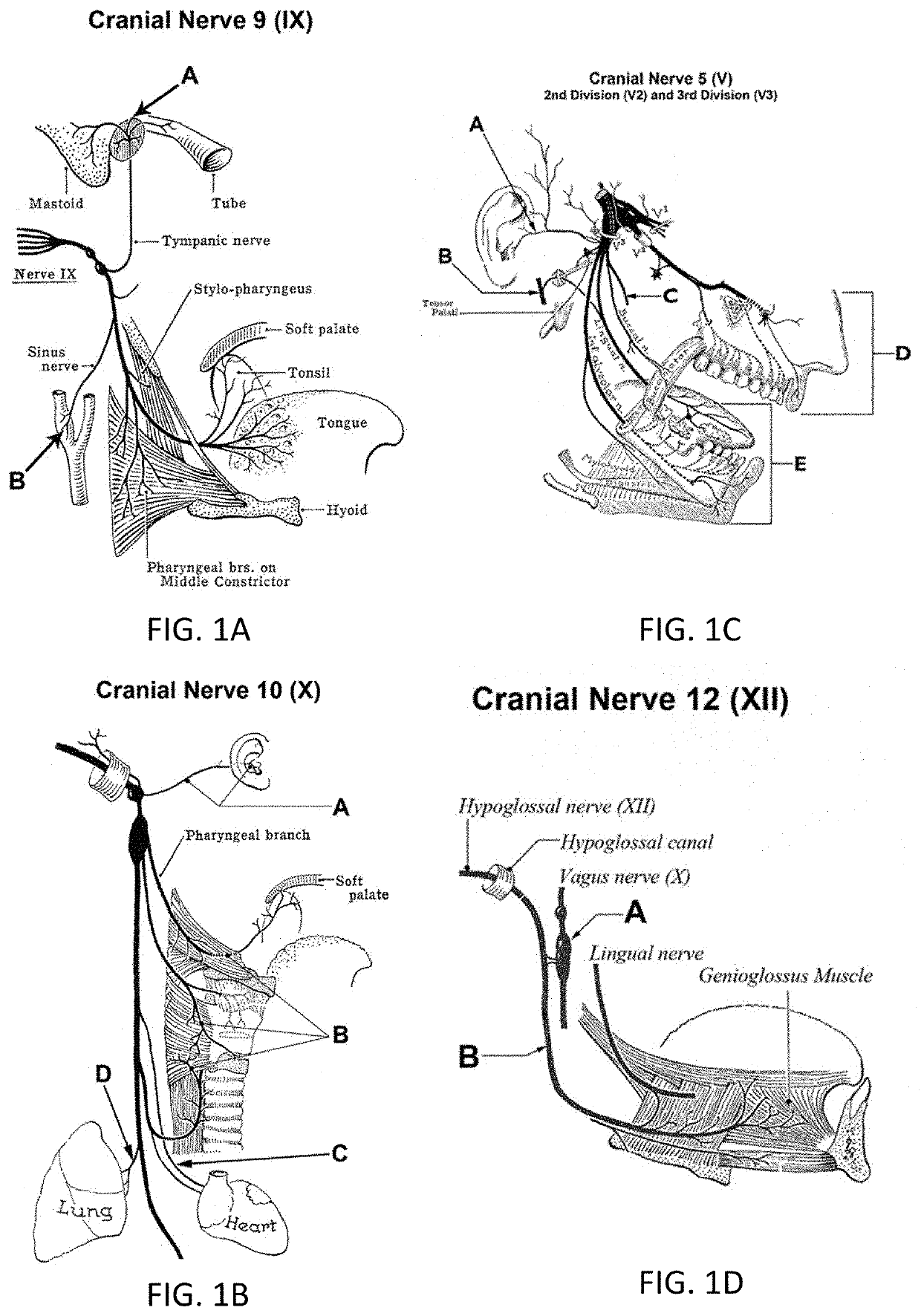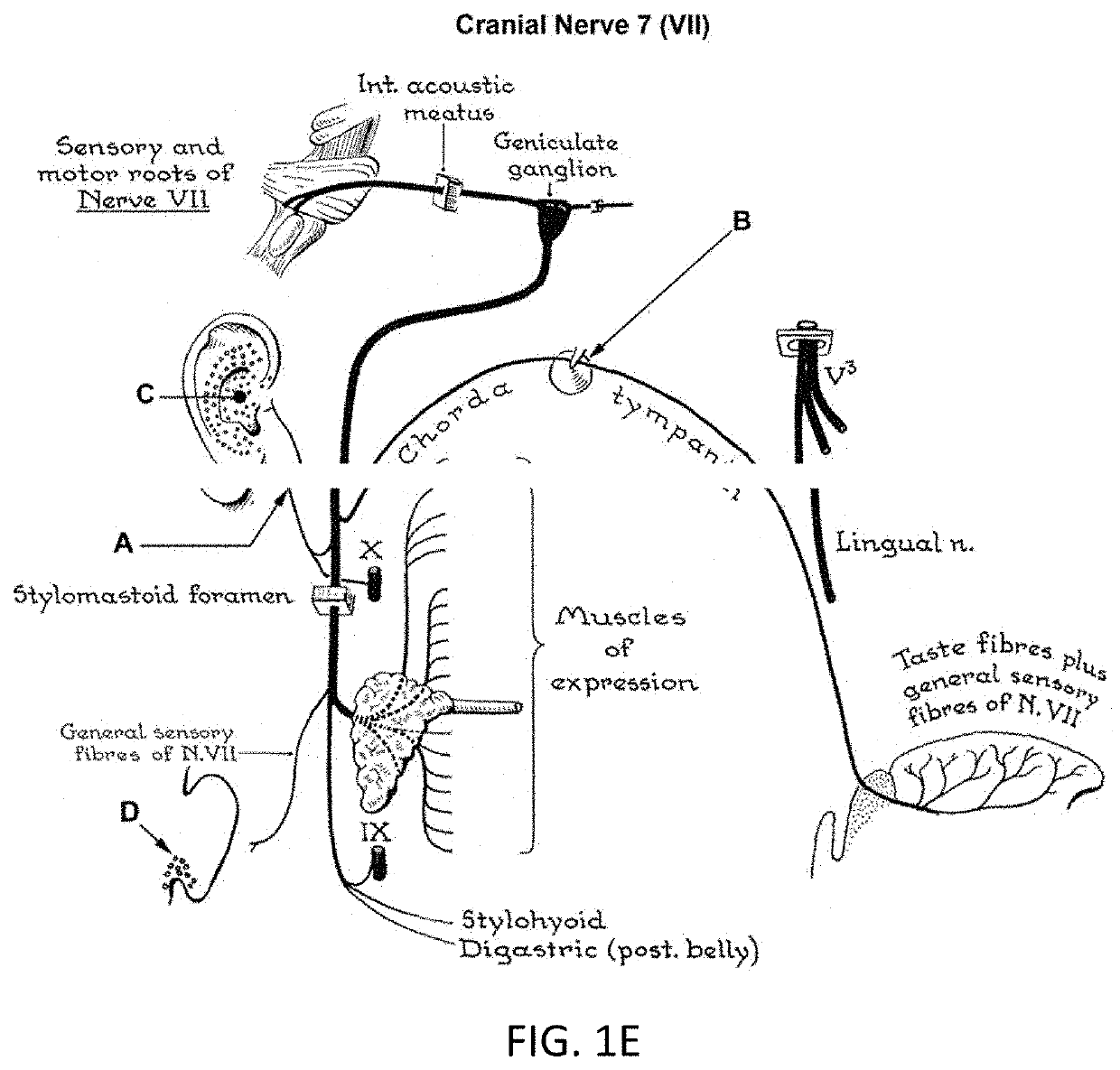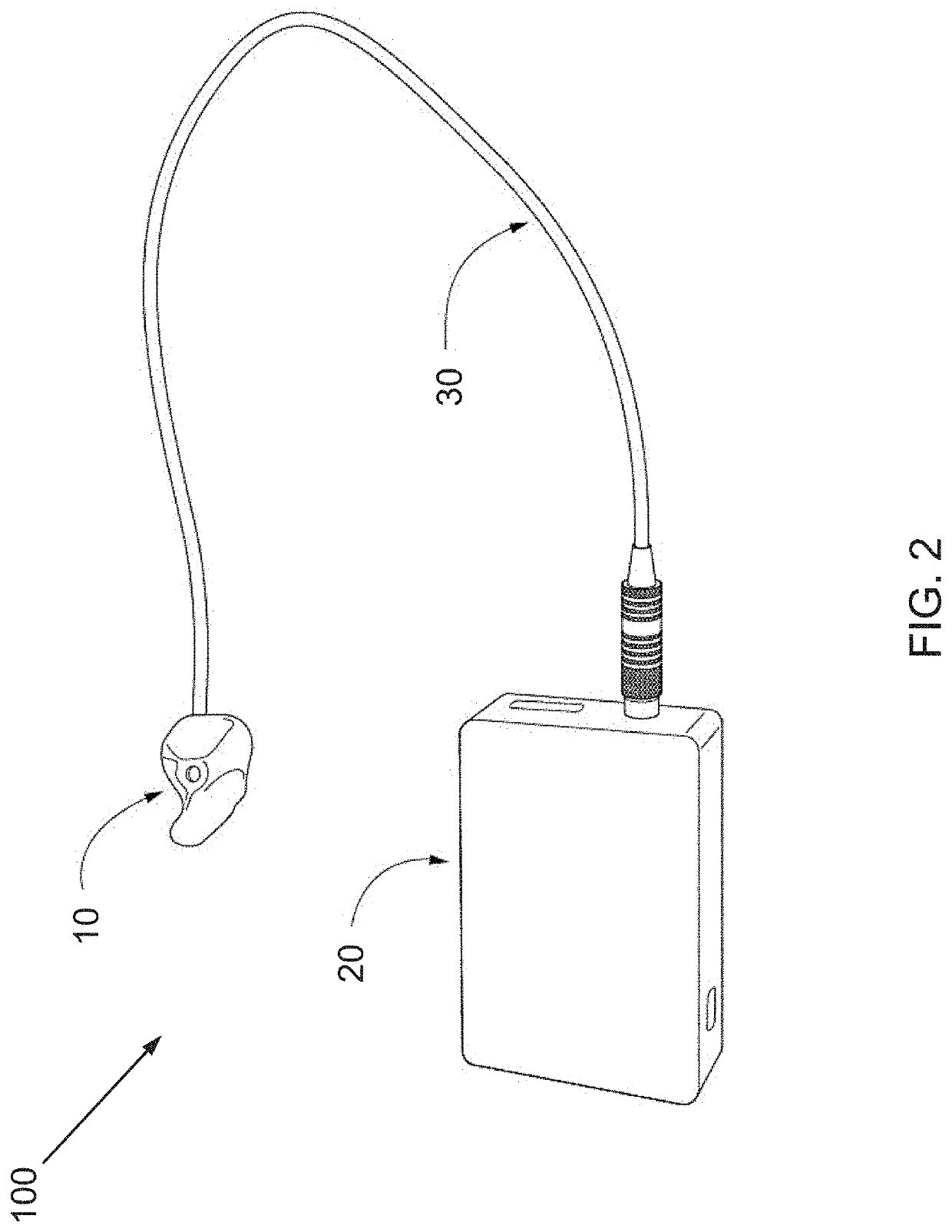Device, system and method for reducing headache pain
a technology of headache pain and peripheral skin, applied in the field of headache pain reduction devices, systems and methods, can solve the problems of headache, headache, nausea, vomiting, cardiovascular signs, etc., and achieve the effect of reducing headache pain and reducing headache pain
- Summary
- Abstract
- Description
- Claims
- Application Information
AI Technical Summary
Benefits of technology
Problems solved by technology
Method used
Image
Examples
experimental examples
[0132]The invention is further described in detail by reference to the following experimental examples. These examples are provided for purposes of illustration only, and are not intended to be limiting unless otherwise specified. Thus, the invention should in no way be construed as being limited to the following examples, but rather, should be construed to encompass any and all variations which become evident as a result of the teaching provided herein.
[0133]Without further description, it is believed that one of ordinary skill in the art can, using the preceding description and the following illustrative examples, make and utilize the present invention and practice the claimed methods. The following working examples therefore, specifically point out the preferred embodiments of the present invention, and are not to be construed as limiting in any way the remainder of the disclosure.
example 1
[0134]In an experimental example, pain perception was examined in 18 subjects with chronic migraine or trigeminal pain which was inadequately controlled by current medications. A plastic earpiece containing a vibrating element was placed within the external ear canal of each subject. Vibration induced by low-level battery power from a remote stimulation device was initiated by each subject after 1 min of onset of pain, and continued for a period of 20-50 minutes. Ratings of pain severity were made by the patient, using an appropriate pain assessment scale. A second, but closely related study examined the incidence of migraine episodes in subjects who have repetitive and quantifiable onsets of migraine. These subjects received vibratory stimuli for 20-50 when they begin to experience migraine pain. The change in perceived pain, as well as the time between episodes of migraine pain was tabulated.
Subjects
[0135]Eighteen adult subjects, aged 19-76 years or age, diagnosed with moderate-to...
example 2
graine and Trigeminal Neuropathy
[0153]A 38 year old female subject with severe migraine and orthostatic hypotension, with a secondary diagnosis of post-traumatic stress syndrome for approximately 3 years was treated using the device of the present invention. The subject's pain had been poorly controlled by opiates and antidepressants.
[0154]The parameters of stimulation were as with all 18 subjects; an initial baseline with no stimulation, a 10 minute low amplitude (1.5 volt, 120 Hz vibration), followed by a 20 minute high amplitude (3.0 volts) vibration, and a 5 minute post stimulation baseline.
[0155]The subject received vibratory stimulation of the ear canal using the present device on 6 separate treatment sessions. As shown in FIG. 18, reported pain decreased at each session, with pain reported at 0 or 1 after each session.
[0156]A 19 year old female subject with severe migraine for approximately 2 years was treated using the device of the present invention. The subject's pain had ...
PUM
 Login to View More
Login to View More Abstract
Description
Claims
Application Information
 Login to View More
Login to View More - R&D
- Intellectual Property
- Life Sciences
- Materials
- Tech Scout
- Unparalleled Data Quality
- Higher Quality Content
- 60% Fewer Hallucinations
Browse by: Latest US Patents, China's latest patents, Technical Efficacy Thesaurus, Application Domain, Technology Topic, Popular Technical Reports.
© 2025 PatSnap. All rights reserved.Legal|Privacy policy|Modern Slavery Act Transparency Statement|Sitemap|About US| Contact US: help@patsnap.com



